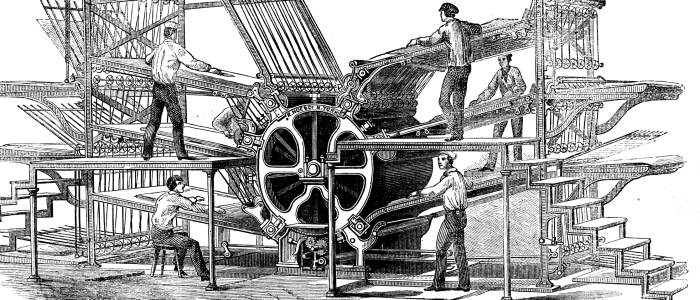The revolutionary invention of the printing press marks the beginning of the Modern Era in Europe. The temporal coincidence between the Renaissance and the appearance of the first printing equipment has been thought of as being a true European phenomenon, the border between Middle Ages and the Modern Age. While in Michelangelo was painting the Sistine Chapel in Italy, Johann Gutenberg was inventing in Germany in the 1450s the first printing press that used movable metallic components. An artistic revolution in Italy and a cultural one in Germany were defining the new year of the European continent.
Given the already existent influence of the Church, the first typographic materials were the first printed versions of the Bible and other religious texts and documents. Church preaching was a common experience of Christianity, while the possibility of individual lecture of the Bible led to more profound understanding of religious aspects and, thus, to an individual point of view.
Therefore, it doesn’t come as a surprise that the period of time succeeding 1450 was the moment of outbreak for different Christian-deriving religious cults. Nonetheless, promoting religion throughout printed material has created an even bigger attraction for the traditional religion, therefore a new mentality for religious ideological battles was emerging.
Printing press was also used in issuing scientific materials that gave general knowledge upon science, engineering, medicine and other fields a chance to spread out and become more accessible. Moreover, the invention of printing has encouraged literacy: the more people learned to read, the faster printed materials were spreading world-wide; the more accessible books were, the more interested people were to learn how to read.
Experiencing literature gives human kind as individuality a personal approach of information (by choosing books judging by one’s interests), encouraging criticism and active attitudes towards written material. While the Renaissance is redefining the idea of personality, inventing the printing press emphasizes the idea of individuality.
Likewise, the novelty of printing has determined an outburst of translated materials that weren’t necessarily on philosophy or science. Books increase in number of demands even during the first decades that succeeded the invention of printing press. Not only that translation makes it possible for books to be known outside the culture and language in which they were created, they also get to change other mentalities. Therefore, European countries start to make their way towards the future in a solidary movement.
The changes brought upon society and mass culture throughout the industrial revolution and the formation of big cities has determined the begging of a second “printing era” – the age where newspaper and books form the idea of mass-media. Craving for information, frequently manipulated by it and sometimes left without a sense of judgment, human kind is just another printed material consumer in a new society.
Gradually, mass publication tends to shatter all that circulation of information managed to achieve. The new forms of communication lean towards social interaction: from the solitude of lecture, society experiences the constant dialogue between people, which will determine a new evolution in media.






